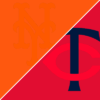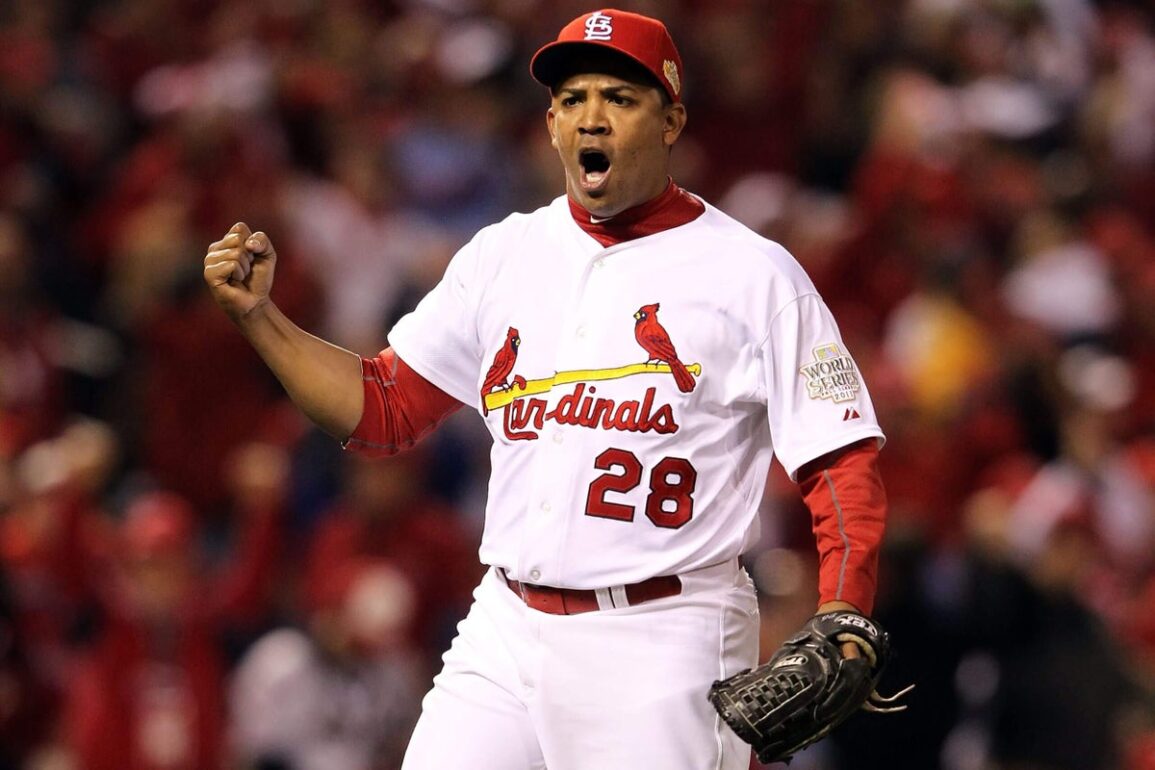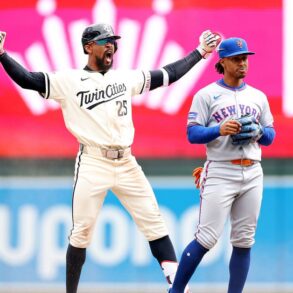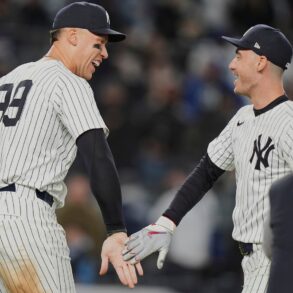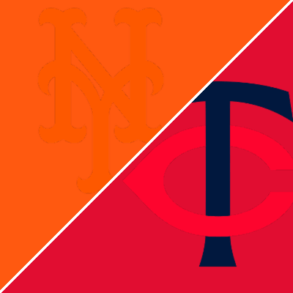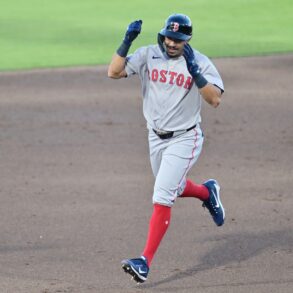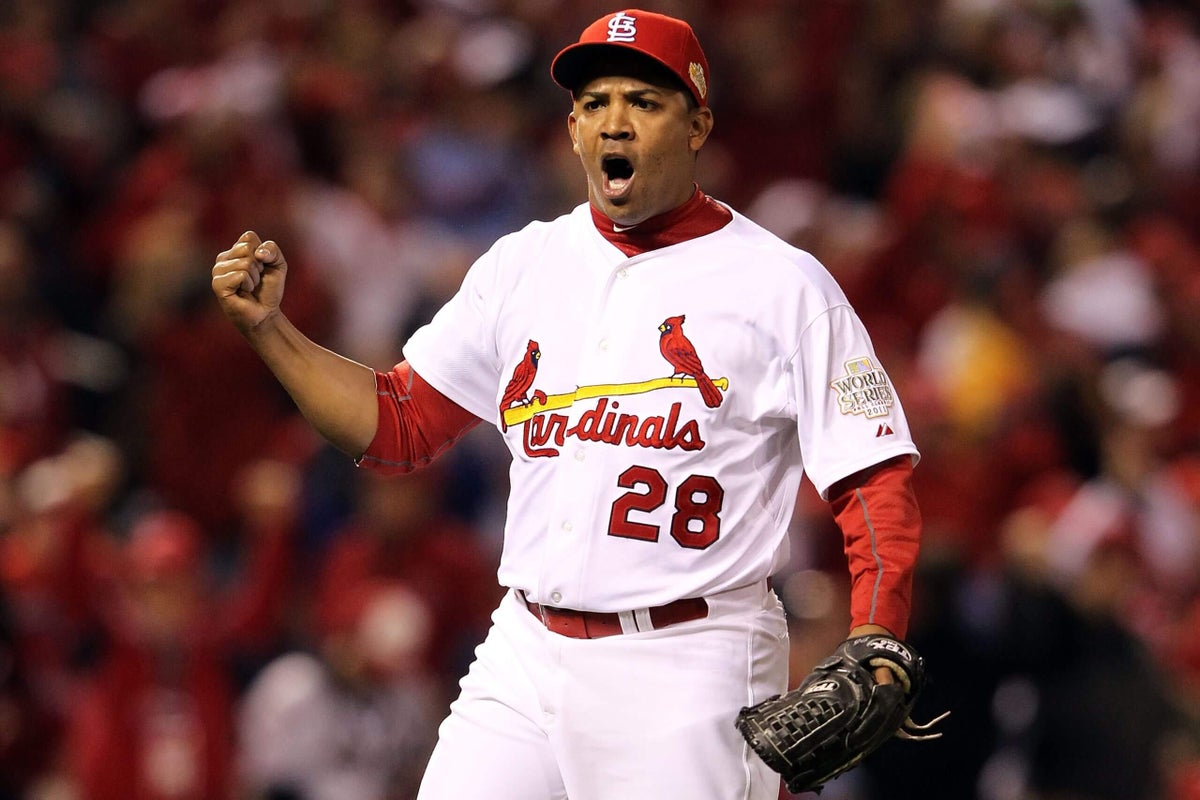
The first general manager to trade right-handed pitcher Octavio Dotel didn’t want to do it. Nobody who knew Dotel really wanted to get rid of him.
“There are guys who get traded a lot because they’re not good guys,” Steve Phillips, the general manager of the 1999 New York Mets, said by phone on Tuesday. “He got traded a lot because everybody always vouched for him.”
Advertisement
Some of the superlatives they might have said: sweet, competitive, bright, respectful, friendly, funny. All applied to Dotel, who died in the Dominican Republic on Tuesday at age 51. Dotel was among the victims of a roof collapse at the Jet Set club in Santo Domingo, where he was attending a concert.
“It just breaks my heart,” Billy Wagner, the Hall of Fame closer and a former teammate, said on Tuesday. “He was such a carefree, easygoing guy, made everybody feel at ease — even when he tried to be angry or mad, he wasn’t very good at it. I’m beside myself now just thinking of all the times I thought about needing to get back together, and (we’re) not ever going to be able to do it again.”
Few players have ever had the chance to impact as many peers as Dotel, the first major leaguer to appear for 13 different franchises (a record since eclipsed by Edwin Jackson, with 14). In many ways, Dotel was perfect for the role. The more places he traveled, the more places he could spread good cheer.
“All records are good,” Dotel said at spring training in 2012 after joining his final team, the Detroit Tigers. “Even if it’s bad, it’s good, because nobody had it before, only you. I hope I can keep breaking my own record.”
Dotel’s big-league journey finally ended the next April, but even then, at 39, Dotel did with the Tigers what he did everywhere: He struck guys out. From Chipper Jones in 1999 to Edwin Encarnación in 2013, Dotel was a harbinger of what pitching has become.
He once got three outs in a combined no-hitter — and found a way to collect four strikeouts while doing it. For his career, Dotel fanned 1,143 batters in 951 innings, an average of 10.8 strikeouts per nine.
Of the 10 pitchers in history with at least 700 appearances and 10 strikeouts per nine innings, only two (Armando Benítez and Wagner) debuted before him.
| Name | Years | Games | K/9 |
|---|---|---|---|
|
Armando Benítez |
1994-2008 |
946 |
10.9 |
|
Billy Wagner |
1995-2010 |
853 |
11.9 |
|
Octavio Dotel |
1999-2013 |
758 |
10.8 |
|
Francisco Rodríguez |
2002-2017 |
948 |
10.5 |
|
David Robertson |
2008-2024 |
861 |
11.8 |
|
Aroldis Chapman |
2010-2025 |
800 |
14.7 |
|
Craig Kimbrel |
2010-2024 |
837 |
14.1 |
|
Kenley Jansen |
2010-2025 |
875 |
12.6 |
|
Adam Ottavino |
2010-2025 |
862 |
10.4 |
|
Jake Diekman |
2012-2024 |
764 |
11.4 |
Omar Minaya, now a senior advisor for the New York Yankees, was Phillips’ assistant in 1998, when the Mets were trying to trade with the Florida Marlins for Mike Piazza. The Marlins wanted Dotel or Ed Yarnall as part of the deal, so Minaya was dispatched to the minors to evaluate the pitchers. The Mets kept Dotel.
Advertisement
“He had velocity and a great slider, and he was really deceptive,” Minaya said on Tuesday. “The closest thing to him now is probably Edwin Díaz — funky delivery, a two-pitch guy with velocity and deception because of the arm action.”
The Mets brought Dotel to the majors in June 1999, and in October he earned the final victory of that memorable season. Facing elimination, Dotel worked three clutch innings in the rain before Robin Ventura’s famous grand-slam single.
“Dotel looks a little bit like Pedro Martínez,” Hall of Famer Joe Morgan said on the NBC broadcast that day, after Dotel shattered the bat of the first hitter he faced. “And anybody that looks like Martínez, I would give him a shot.”
The Mets parlayed that potential into a trade that winter, sending Dotel to Houston for Mike Hampton, the ace who helped them reach the World Series in 2000. By the time Dotel himself got there, in 2011, he’d also pitched for (deep breath) the Astros, Oakland A’s, Yankees, Kansas City Royals, Atlanta Braves, Chicago White Sox, Pittsburgh Pirates, Los Angeles Dodgers, Colorado Rockies, Toronto Blue Jays and St. Louis Cardinals, who got him in a trade that July.
Dotel dominated the NL playoffs; the Phillies and Brewers hit just .087 off him as St. Louis won the pennant. Along the way, a squirrel scampered across the field in the division series — and when a fan tossed a stuffed one into the Cardinals’ bullpen, Dotel claimed it as his own. After the NLCS, he shared a victory beer with his plush pal in the clubhouse.
The Cardinals would include the squirrel on their championship rings after they beat the Texas Rangers in the World Series. Dotel notched two late outs in Game 7, and a year later, back in the postseason with Detroit, he made six more scoreless appearances.
It was all so much more than anyone could have expected. The Mets signed Dotel for just $3,000 in March 1993, eight months before his father, Emilio, was murdered in a robbery while working his second job as a taxi driver. An older brother, Angel, was playing in the minors at the time and never returned to pro ball. Octavio persevered.
Advertisement
“He didn’t carry anger or bitterness around with him at all,” said Phillips, who was then the Mets’ farm director. “He was very high-spirited, in a positive way. He had great energy about him, a great smile.”
A generation later, after another unthinkable tragedy, that smile is what lingers — the smile and the strikeouts, the twin forces that always kept Dotel in demand.
“A lot of different experiences — managers, coaches, players,” Dotel said that day in 2012, reflecting on his adventures. “There are a lot of players who don’t know everybody, like me. I always get new friends.”
(Top photo of Octavio Dotel: Jamie Squire / Getty Images)
This post was originally published on this site be sure to check out more of their content.




